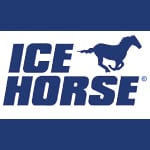As the prognosis comes from your vet’s lips, a knot forms in your stomach, tears well up, and your lower lip begins to shake. You’ve just been given the news that your horse has an injury or condition that will require significant time off – colic surgery, soft tissue injury, or deep wound. You’ve been wrapping your horse in bubble wrap for years, given him every supplement under the sun, ensured that his nutrition was managed at the highest level, and yet they still end up in the undeniable fate of needing time off. Just like every great athlete, there comes a time in a career that rest and recovery is of the utmost importance for the longevity of their time in the show pen and their overall health.
During the process, the most important part might come down to the mental focus and stability of the owner or caretaker. As horse owners and competitors, we spend countless hours and dollars investing in our passions, so when an injury brings everything to a screeching halt, it’s hard not to want to push too fast for the quickest recovery, give up on a horse, or give up on ourselves.
Here are a few tips on staying focused and positive during an extended recovery time period.
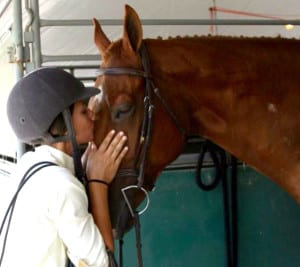 1) Take a Deep breath – You are going to lose a season of showing with your horse, but things could be worse. When asked about how to deal with the news of a long term recovery injury, 2014 AQHA World Champion Chad Sandoval said it best “Go to the Beach!” We often get so wrapped up in show schedules, we forget to take time for ourselves and put things in perspective and enjoy life more than going to horseshows. So start by counting your blessings for your health, friends, career, and family. Think about this as a recovery, not a loss.
1) Take a Deep breath – You are going to lose a season of showing with your horse, but things could be worse. When asked about how to deal with the news of a long term recovery injury, 2014 AQHA World Champion Chad Sandoval said it best “Go to the Beach!” We often get so wrapped up in show schedules, we forget to take time for ourselves and put things in perspective and enjoy life more than going to horseshows. So start by counting your blessings for your health, friends, career, and family. Think about this as a recovery, not a loss.
2) Call your Insurance Agent. Long term recovery means you will be visiting the vet often and for an extended periods of time. You want to have all the information from your insurance agent so that you can make the best care plan for your horse.
Chris Hocutt from The Emo Agency advised, “If you are dealing with a long term recovery, you will need to be aware of how long your policy is going to provide coverage for the issue so that you can plan treatment, diagnostics, follow up, etc. Equine medical insurance is written on an annual term basis where the coverage will start on one day and end on the same day the following year. A person needs to be aware of their renewal date and any extension of coverage that their policy might provide in the new policy term. Any injury or illness that occurred during one policy term will be considered pre-existing after the inception of the new policy term. This is why it is crucial to really read and understand your policy as well as have an agent that can and is willing to explain it to you.”
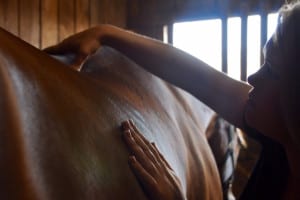 3) Focus on learning – Diving into research gives you something to do and makes you feel like you are part of the process for the recovery. While you should definitely trust in your vet and follow a professional’s advice, it can be therapeutic to start learning on your own and asking questions to could lead to other options for treatment. Seventy percent of performance horses have a soft tissue injury during their careers, with such high numbers there is a huge focus and a ton of information on prevention, treatments, and recovery options (much more than ten years ago). As colic is the leading cause of death in horses, it too has mountains of research behind it. Start Googling! Just make sure your source is not 5-year-old forums, look for reputable resources like academic studies or articles by veterinarians.
3) Focus on learning – Diving into research gives you something to do and makes you feel like you are part of the process for the recovery. While you should definitely trust in your vet and follow a professional’s advice, it can be therapeutic to start learning on your own and asking questions to could lead to other options for treatment. Seventy percent of performance horses have a soft tissue injury during their careers, with such high numbers there is a huge focus and a ton of information on prevention, treatments, and recovery options (much more than ten years ago). As colic is the leading cause of death in horses, it too has mountains of research behind it. Start Googling! Just make sure your source is not 5-year-old forums, look for reputable resources like academic studies or articles by veterinarians.
4) Make a plan – In coordination with your vet, farrier, chiropractor, trainer, and any other caretakers of your horse, you will want to have a good plan in place for your recovery time. Take into consideration your own learning and what your life can manage. You will feel so much better when you can look to longer goals and know that there is an end in sight. Then take it slow. What is one more month on a yearlong recovery process? In the end you will have so much more confidence in your horse’s ability to stay sound and healthy. (Plus they have a World Show and Congress every year!)
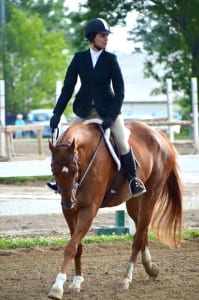 5) Stick to the plan – As a horse starts to recover, improvement feels so good, and you will be anxious to push a little harder. She looks like she is walking and trotting sound, she must be ready to canter, but do not it! As much as you want and feel like the two of you can do more, stick to the plan. Decades of research go into long term best practices for recovery, pushing too hard increases the chance of re-injury or another fallback. In this case, slow and steady really does when the race.
5) Stick to the plan – As a horse starts to recover, improvement feels so good, and you will be anxious to push a little harder. She looks like she is walking and trotting sound, she must be ready to canter, but do not it! As much as you want and feel like the two of you can do more, stick to the plan. Decades of research go into long term best practices for recovery, pushing too hard increases the chance of re-injury or another fallback. In this case, slow and steady really does when the race.
AQHA World Champion Exhibitor Tasha Lodwig (pictured right) recently went through a long recovery program and made a successful return to the show ring. She offers this advice, “I think one of the biggest mistakes people make is that they rush the recovery process at times in order to get to that one show or accomplish some personal goal, but that is when you end up doing even more damage. You need to be able to read your horse and work at his own pace and the only way to do that is by having patience with the process.”
6) Track Your Progress – There are many apps out there that help track horse records, maintenance and training. Horse Notes is a mobile app that allows you to journal your progress with notes, dates and photos. Just the act of writing down what you did that day for your horse’s recovery helps you stay focused and makes you feel like you are contributing to the recovery. Also, tracking your horse’s activity and treatment will help when you are communicating to your vet and caretakers about progress.
7) Connect with Friends – Over the course of a recovery, horse owners can get down emotionally and having friends who understand what you are going through can be a great way to stay positive. Tasha cautions us to stay focused on your horse. “Being in the horse world you have a lot of people within your network who have gone through somewhat of a similar experience with lameness or horse injuries. That does help, but every situation is different. I think the only thing you can do is just be patient.”
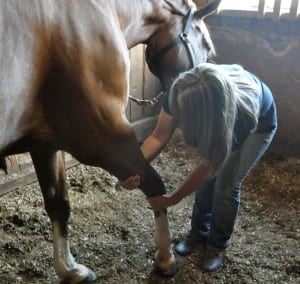 8) Save and Spend – Horse showing expenses add up from entry fees, training bills, tack and equipment. So while your horse is at home recovering, take the money you budgeted for shows and invest in items for the future. Purchase large items that are easily transferable to any horse and likely resalable if the recovery doesn’t fully take you back to the show arena. Try to focus on needed repairs or additions to the trailer, a new saddle, a pair of boots, so when you finally get back to showing you won’t have unexpected expenses or you have already upgraded before the season begins. The shopping experience also helps you stay connected to the horse world and makes you feel like you are contributing to your long-range goals.
8) Save and Spend – Horse showing expenses add up from entry fees, training bills, tack and equipment. So while your horse is at home recovering, take the money you budgeted for shows and invest in items for the future. Purchase large items that are easily transferable to any horse and likely resalable if the recovery doesn’t fully take you back to the show arena. Try to focus on needed repairs or additions to the trailer, a new saddle, a pair of boots, so when you finally get back to showing you won’t have unexpected expenses or you have already upgraded before the season begins. The shopping experience also helps you stay connected to the horse world and makes you feel like you are contributing to your long-range goals.
9) Keep Riding – If your horse’s vet approved recovery plan included limited riding, you need to find an alternative option to keep yourself in the saddle. Take lessons from the hunter trainer down the street, ride a friend’s horse when they are out of town, get a cheaper project horse, or spend a weekend at your trainers. The last thing you want is a lack of confidence when you return to showing. Try focusing on areas that really need your improvement or focus. This is a time to slow down and get things right!
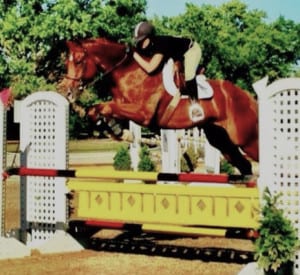 10) Celebrate small goals – With long-term recoveries, bringing a horse back is daunting and boring. Looking ahead to 12 weeks of hand walking or months of after workout icing regiments can be so unenticing that we want to skip or we let the quality of care slip. Give yourself small goals to focus on that aren’t necessarily related to the injury or recovery program so you can diversify your energy and use the time wisely to manage other needs. For example, if you horse has six weeks of stall rest, start focusing on a grooming goal like achieving a longer, thicker tail, shinier hair coat, or healthier hooves. Then add a performance goal, if hand walking, work on ground manners or your showmanship set up. Once you move to the saddle, try concentrating on moving your horse into a lighter bit, working on lateral suppleness (if allowed by your veterinarian). Because you have the opportunity to be slow and deliberate, you will find working on the basics will increase your horse’s communication and establish an even greater foundation for the next phase of recovery.
10) Celebrate small goals – With long-term recoveries, bringing a horse back is daunting and boring. Looking ahead to 12 weeks of hand walking or months of after workout icing regiments can be so unenticing that we want to skip or we let the quality of care slip. Give yourself small goals to focus on that aren’t necessarily related to the injury or recovery program so you can diversify your energy and use the time wisely to manage other needs. For example, if you horse has six weeks of stall rest, start focusing on a grooming goal like achieving a longer, thicker tail, shinier hair coat, or healthier hooves. Then add a performance goal, if hand walking, work on ground manners or your showmanship set up. Once you move to the saddle, try concentrating on moving your horse into a lighter bit, working on lateral suppleness (if allowed by your veterinarian). Because you have the opportunity to be slow and deliberate, you will find working on the basics will increase your horse’s communication and establish an even greater foundation for the next phase of recovery.
Dive into this next phase of your horse journey with as much passion and energy as you do in your performance and you will find a year goes by faster than you think and you will have a better relationship with your vet, trainer, and your horse on the other side.
Photos @ Sarah Elder Chabot




